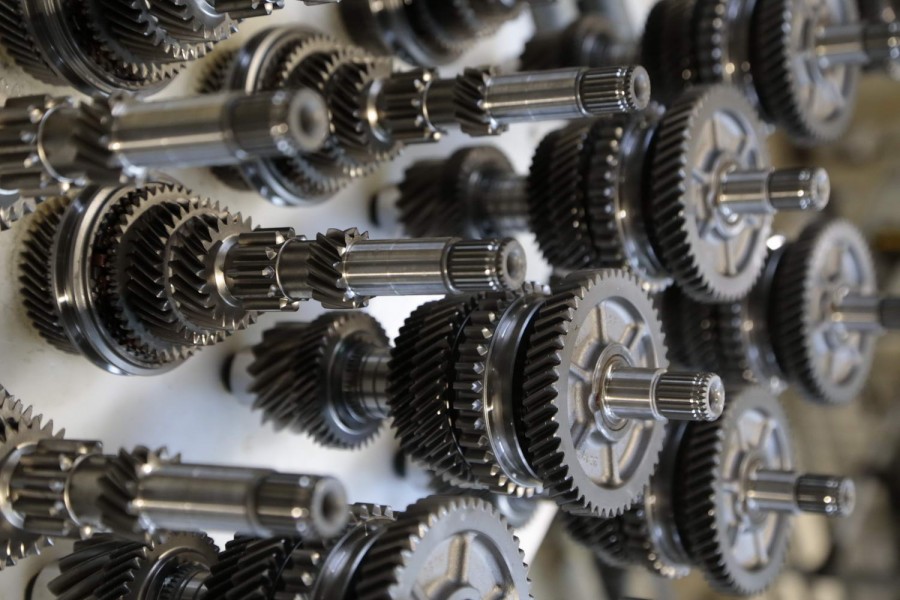The answer to this question, frustratingly, often starts with 'it depends...' Like so much in motoring, an awful lot hangs on personal preference - a factor that can often outweigh financial concerns. Certainly, the old rule of thumb that a car with an automatic gearbox was going to be more expensive to run no longer, entirely, holds water and there's a great deal of 'it depends...' when it comes to running cost comparison for a manual versus an automatic now.
Let's travel back in time, a little, to the days when automatic gearboxes were big, heavy, power-sapping and you were lucky to get four speeds, let alone five. Those gearboxes work thanks to a device called a torque convertor that, in its simplest form, takes power from the engine to pressurise the hydraulic fluid in the gearbox, and that pressurised fluid is what changes the gears and ultimately what transmits power to the wheels. It's simple, it's robust and it's very, very smooth.
The problem with an old-school torque convertor is that they tend to be heavy, and their draw of power from the engine is what makes those old auto boxes so thirsty.
That's no longer the case. Modern automatics (and the eight-speed auto supplied to various car makers by transmission specialist ZF is the state of the art here) can use traditional torque convertor operation and yet actually achieve better overall fuel economy and lower CO2 emissions. Take most modern BMWs as a group case in point - with almost every model, you're financially better off fitting the automatic, compared to the manual.
Well, almost. Of course, for many cars an automatic gearbox is an optional extra, and prices range from just under €1,000 extra to more than €3,000, so get your calculator and work out if the extra fuel and tax savings (and they may only be marginal) compared to a manual gearbox will pay you back. It's also worth carefully comparing models from rival car makers. For instance, if you buy a BMW 3 Series or Audi A4, an automatic gearbox costs extra. The rival Alfa Romeo Giulia, or Lexus IS 300h, come with automatics as standard.
That brings us to another point. Not all automatics are the same. We've learned about the traditional torque-convertor automatic, but the Lexus IS 300h (along with all Toyota and Lexus hybrid models) uses a continuously variable transmission, or CVT. These used to work with steel-reinforced bands running on opposing cones, the cones moving further apart or closer together, stretching or compressing the bands, to mimic the actions of gears. The idea being that, because the CVT is step-less yet can vary the ratio continuously, you can keep the engine at its most efficient rpm, and let the gearbox alter the speed of the car.
It's a little piece of genius, in that respect, and it's theoretically the most efficient possible form of gearbox or transmission, but it has one major flaw - noise. Because the idea is to keep the engine turning at one constant speed, depending on how fast you want to go, a CVT can cause an engine to rev loud and long, to the point where the noise becomes incredibly irritating and seemingly not related to what you're doing with the accelerator pedal. Accelerate hard in a Toyota Prius and you'll see what we mean. More recent CVTs have become developed to the point where this is less of an issue, but it hasn't gone away entirely.
Then there are automated manuals, which aren't strictly speaking automatics at all, but manual gearboxes with hydraulic actuation for the gear changing and clutch. The earliest versions of this were developed by Ferrari and Maserati, seeking to mimic the 'flappy paddle' fingertip gearchanges of racing cars. Citroen and Peugeot soon caught on to the idea too, with the first EAT6 gearbox, but these early efforts were, truth be told, woeful. The electronics and hydraulics could actually change gear very quickly, but because you weren't doing it, there was a noticeable gap between ratios, which lead to the dreaded 'head-nod' gearchange. Again, later versions were much improved, and they can offer some remarkable fuel saving benefits.
The most common form of automated manual now, though, is the dual-clutch gearbox. Originally developed by Porsche for its Le Mans racers, and latterly developed by Volkswagen under the DSG brand, this splits its gears onto two shafts - odd-numbered gears on one, even numbered on the other, with a clutch for each shaft. The idea being that when one gear is engaged, the electronics that control the gearbox has the next gear ready, and simply opens one clutch and closes the other when the time comes. Gearchanges are lightning-fast, and in many cases the overall efficiency of the car is increased (although not in all cases - again, check the numbers carefully). There's also an issue with some dual-clutch gearboxes being more service-intensive than a traditional manual or torque-convertor automatic, although more recent models are supposedly 'sealed-for-life' - a phrase that always worries us somewhat.
So, back to the question - manual or auto for your next car? Again, the answer is 'it depends...' The larger and more luxurious the car is, the more an automatic is de rigueur for retaining resale value (and indeed, the more likely an automatic is likely to be standard-fit). Check all your numbers and costs carefully, and make sure that in cases where an automatic is more efficient on fuel and tax than a manual, that you're covering enough annual mileage to be able to claw back the extra cost in fuel savings.
And please don't forget a good old fashioned manual gearbox. As automatics and dual-clutch gearboxes rise and rise in popularity, it's more important than ever to remember that a manual puts you more in touch with your car, and often offers a more engaging and enthusiastic driving experience, than an auto.








